
Category Archives: Anti-Semitism

The case of Quintez Brown, the man who entered Louisville, Kentucky mayoral candidate Craig Greenberg’s office and opened fire on Mr. Greenberg and others present with a 9mm Glock handgun re-raises the issue of the nexus that seems to exist between at least some types of mental illness and rabid, violent antisemitism.

Blinded to One’s Own Bias
Talk about tone-deaf.
A teaser for an “investigative” article by “The Journal News,” which serves several New York counties and whose online moniker is “Lohud,” consisted of the image of a clenched puppetmaster’s hand wielding pencils with strings controlling silhouettes of children, perched atop a large pile of dollars. The caption reads: “Rabbi holds the strings on $76M for East Ramapo School District… Coming Feb. 9.
The paper has a long history of what critics contend is unfair reportage about Orthodox Jews in Rockland County. That the imagery of the teaser, though, promoted a long-dishonored antisemitic canard was unarguable.Two days after gobsmacked readers began contacting the paper, its executive editor, Mary Dolan, issued an apology, explaining that its teaser’s “words and imagery unintentionally featured an antisemitic trope.”
“Members of our team, including myself,” she asserted, “did not recognize the stereotype that degrades and demeans Jews in the image and accompanying language.”
It is good to know that the paper was willing to admit its misstep, but not so good to know that seasoned journalists were unfamiliar, if indeed they were, with the time-dishonored imagery of the Jew as a conspiratorial puppet master, sinisterly manipulating others. It was, of course, much employed by the Nazis, and the canard it represents have stoked not only past pogroms but recent attacks on Jews, as in the case of the Pittsburgh synagogue shooter, who, in 2018, killed 11 worshippers in the largest modern mass shooting against Jews in America.
The Journal News has something of a history of “exposing” supposed sins of “rabbis” in Rockland County, with regard to the allocation of funds by the East Ramapo school board to local schools. The area has many Orthodox Jewish residents, and some of them serve on the board. As of 2020, there were approximately 11,000 students attending public schools in the district, but 27,000 students attending private schools, mostly Jewish ones.
The teased story, Ms. Dolan noted, “raises questions” about “how officials” (presumably the “rabbi”) “have chosen to allocate millions of dollars in public funds.”
The story finally appeared, after a delay, and, indeed, it contained “raised questions” – in quotations from people with records of animus against Orthodox institutions and individuals. What it didn’t contain was any factual assertion of wrongdoings. Because there have been none.
Yes, federal funds have been used to support services to children attending Jewish schools. But that is entirely in accordance with state formulas and federal laws mandating the provision of textbooks, school transportation and special education services to all school children — yes, dear Journal News, even Jewish ones.
Parents of nonpublic school children pay federal and state taxes like any citizen, and that includes the property taxes that do much to fund localities’ schools. In fact, since not all governmental services provided to public schools and their students are constitutionally available to nonpublic schools and their students, parents of the latter receive less in return for their taxes than parents of public school students.
The article’s target was Rabbi Hersh Horowitz, the executive director of a local group called the Community Education Center,” and, before the article was published, he released a statement explaining that “over the past year, Lohud has repeatedly attempted to slander me personally, and my organization as a whole.”
He went on to note that all contracts awarded by the East Ramapo Central School District have been through a rigorous “Request for Proposal” process, devoid of any private lobbying efforts; that his organization has been audited by state agencies multiple times, with no findings of misdeeds; that its most recent contract was cleared of any conflict of interest by NYS Commissioner of Education, Betty Rosa; that the its allocations, to be distributed over ten years, is federally funded and specifically earmarked – by the federal government – for private school children.
And, defiantly, he declared that his organization “will continue, undeterred and undistracted, to provide myriad essential educational services to thousands of children in multiple districts attending private schools across Rockland and Orange County.”
The Journal News hit piece didn’t mention Bruce Singer, the school district’s appointed monitor. But, before the article was released, Mr. Singer told the daily Jewish paper Hamodia that the claims made in Rabbi Horowitz’s statement are “100%” accurate. Singer also criticized the reporter of the then yet unpublished article for “misrepresenting the truth.” He also told the reporter that Rabbi Horowitz’s organization had been the subject of many audits, “and there have always been outstanding comments regarding his operation.”
In her apology for propagating the antisemitic image in the teaser, Ms. Dolan took pains to condemn “all forms of antisemitism in all ways that it is expressed.”
It’s a nice sentiment. But it brings to mind something William Saletan once wrote: “There’s a word for bias you can’t see: yours.”
The above essay appears at Times of Israel, here.
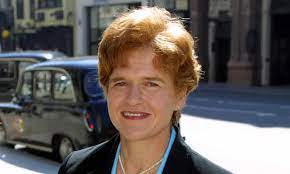
We should hire Deborah Lipstadt to combat antisemitism, not punish her for doing so
Also, an essay I wrote for Religion News Service about the stalled Deborah Lipstadt nomination can be read here:
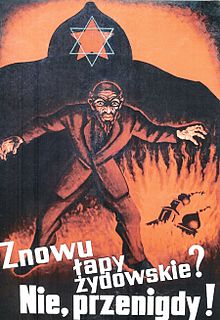
Unrighteous Indignation
The Polish envoy entrusted several months ago with the mission of improving relations with Jews recently called his country’s 2018 law criminalizing claims that Poles were complicit in the Holocaust “one of the stupidest” laws ever. To read why, and the end of the story, click here.

Lipstadt in the Lurch
Noted historian Deborah Lipstadt was nominated by President Biden to head the administration’s Office to Monitor and Combat Anti-Semitism. She should be a shoo-in but her appointment has been stalled. To read why, click here.
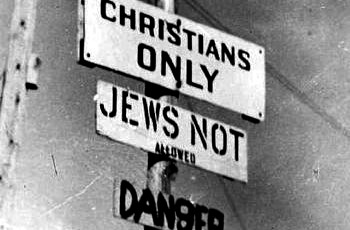
What to Give Your Jewish Neighbors for Christmas
I’m not in the habit of writing non-Jewish holiday-season pieces but did so recently. My essay appeared in the Washington Post but can be read paywall-free here.

A “Certain Sect of People”
People sometimes ask me if writing a letter to the editor of a major newspaper is worth the trouble, considering that having one’s letter chosen for publication is a long shot. I reply that it’s still worthwhile, because the paper knows that, for every letter it gets that takes a particular stand, there are likely hundreds of readers who share the letter-writer’s view but didn’t bother to write.
To compare apples to, well, rotten ones, something similar is true when it comes to antisemitic screeds. Like 45-year-old Nick Colella’s during a Planning Board public hearing in the Rockland County town of Haverstraw, north of Ramapo.
The topic of the hearing was a request for a variance to convert a single-family residence into a shul. The owners want to build an addition and second floor to the home and add 27 off-street parking spaces.
At the podium, Mr. Colella took the opportunity to assert that some of his neighbors don’t put away their garbage cans for days and weeks because they “are too lazy to take it in because their maid didn’t pick it up, right?” Scattered applause ensued.
Then, eliding the fact that most of the neighborhood lacks sidewalks, he complained about a “certain sect of people” who he said “tend to walk in the street, and nobody is wearing any reflective gear.” And then explained, “So if I run one of them over, and of course I’m going back over them again, right?”
Once the video of the repulsive comment circulated, public officials were quick to condemn it. New York Governor Kathy Hochul tweeted: “Antisemitism, like all forms of hate, is horrifying and unacceptable. Everyone has the right to walk down the street without fear. New York, we are better than this.”
Ramapo Town Supervisor Michael Specht and State Sen. James Skoufis denounced the remark. And Rockland County Executive Ed Day, who has himself been accused of unfairly characterizing some of the county’s Orthodox Jewish residents and institutions, called the tirade “beyond disgusting… utterly ignorant and hateful,” condemning it “in no uncertain terms.”
Local authorities are looking into bringing charges against the shameless speaker, and New York Attorney General Letitia James offered her assistance in the matter.
All of which is reassuring and laudable. But what remains, in the end, is the likelihood that for every racist or antisemite sufficiently simpleminded to announce his hatreds publicly, there are likely many more who quietly embrace similar vile sentiments.
As Rabbi Shragi Greenbaum, the Agudah’s Rockland Office director, put it to a reporter: “What remains of concern… is how many Rockland County residents harbor similar feelings to those of the speaker at the planning board but aren’t foolish enough to proclaim them publicly.”
How many congratulatory calls, one wonders, did Mr. Colella get that night? I imagine if you asked him, he’d happily tell you.
There are people in whom antisemitism is ingrained. They are part of society and, like people who don’t shower, they just have to be tolerated (at least to an extent). And then there are non-Jews who sincerely like Jews. But the broadest penumbra of the non-Jewish population has no inherent animus or love for us, but can easily be pulled in either direction.
As Rabbi Greenbaum continued: “It’s important for neighbors — Jewish and non-Jewish — to introduce themselves to one another and to better get to know the needs and sensitivities of those outside their social circles.”
I like to call identifiably Orthodox Jews “walking Jewish billboards.” We project — intentionally or not — the image of Torah fealty to others who may well form their opinion of Jews based on how they perceive us.
And showing others that menschlichkeit is fundamental to Yiddishkeit is not hard. With the growth, baruch Hashem, of our communities and our expansion into new areas, opportunities to make good impressions are ubiquitous.
Things as simple as yielding to others in traffic or holding a door open for the person behind one can make all the difference. So can a simple smile and “good morning.”
Unfortunately, though, nothing is likely to change the Colellas of the world.
(c) 2021 Rabbi Avi Shafran

Fire, Ice, Air
My father, a”h’s, fifth yahrtzeit is tomorrow. Several years before he passed away, he and I collaborated on a book about his experiences in Poland, Siberia and Baltimore. It is titled: “Fire, Ice, Air” and can be obtained here.
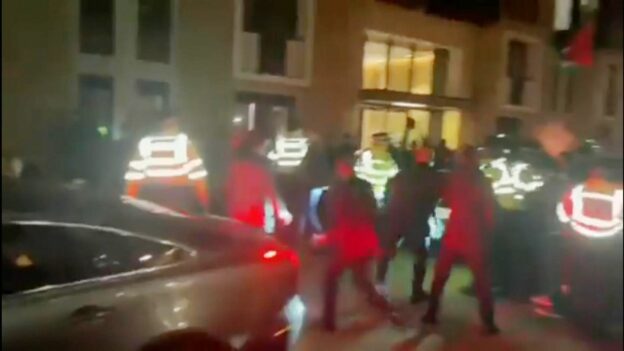
Loud Loutishness: Decibels Aren’t Arguments
Anyone with the unfortunate habit of listening to talk shows may have noticed the inverse relationship between loudness and logic. Or as Leonardo da Vinci is said to have said, “Where there is shouting, there is no true knowledge.”
It’s true in daily life too. Some people seem to imagine that decibels are arguments, that screaming angrily is a good-enough stand-in for persuasion — even for facts.
Last week, across the big pond to the east, the Israeli ambassador to Great Britain, Tzipi Hotovely, after speaking and taking questions at the renowned London School of Economics, was set upon by a screaming crowd of Arab and Muslim students. Egged on by social media to “smash her car window,” members of the mob loudly shouted slogans, curses, “shame on you” and other rational arguments.
Security officers and bodyguards bundled the ambassador into a car while police clashed with the shouting mob.
(British Home Secretary Priti Patel tweeted that she was “disgusted by the treatment of the Israeli Ambassador.” Foreign Secretary Liz Truss and Nadhim Zahawi, Secretary of State for Education, expressed similar reactions.)
The mob’s screaming was a stark contrast to the sort of reasoned give-and-take that had just taken place inside the building. And further evidence of the loudness/logic inverse relationship.
Because the screamers, at least the smarter ones, likely know, deep down, that Israel does not, as they chant, target civilians when responding to Hamas terror attacks or seek to oppress its Arab citizens. So all that’s left to “make their case” is yelling.
But beneath the baseless charges of baby killing and subjugation lies a broader, equally baseless charge made by many anti-Israel “activists” (if slander can be described as activism).
That larger untruth is the very “Palestinian narrative,” the contention that the Jewish return to Eretz Yisrael was a colonial venture, the displacement of a native population by foreign usurpers.
It makes for a great shout, and shouted it is, at rallies and protests around the world, often encapsulated as “From the River to the Sea, Palestine Will Be Free!” (Translation: “Kill or expel Jews from the land.”)
And shouting is the only way to promote the narrative, the only means of allowing it to obscure the facts of history.
To be sure, Arabs have lived in Eretz Yisrael for centuries, but the land has never been Judenrein. Jews were a presence in the land since Yehoshua’s time, even after the destruction of the Second Beis Hamikdash and the expulsion of most of Klal Yisrael from their land.
And, of course, millions upon millions of Jews have, over the centuries since 70 C.E., prayed thrice daily for divine mercy to allow them to return — return — to their land — their land.
What’s more, the Arab presence in 1948 Palestine was anything but indigenous. Many who call themselves native “Palestinians” are in truth descended from successive waves of people who came to the area from other places.
Like Egypt, the source of successive waves of immigrants at the end of the 18th century, fleeing famine and government oppression at home.
The 19th century saw Arab immigration to Eretz Yisrael from Algeria and what is now Jordan. Bosnian Muslims, too, came in significant numbers.
Later on, after Jews began returning to the land, opportunities drew even more Arab immigrants. As Britain’s Peel Report noted in 1937, “The Arab population shows a remarkable increase ….. partly due to the import of Jewish capital into Palestine and other factors associated with the growth of the [Jewish] National Home…”
So, when Israel declared its statehood in 1948, there was a sizable Arab population in Eretz Yisrael. And the desires and aspirations of that population and its descendants in the land should not be ignored. But many, if not most, were not native to the land. And the forebears of Jews, if millennia matter, were.
Arabs residing in the country or the West Bank or Gaza could realize their hopes for better lives, if only they acknowledged those truths. Then, good-faith, civil discussion could ensue.
It is an unlikely development, I admit, but one thing is certain: Shouting is no replacement for talking.
© 2021 Ami Magazine
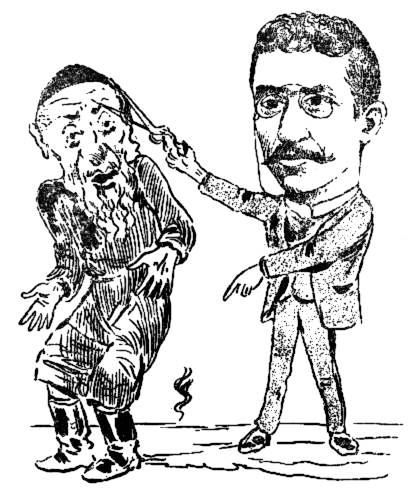
Vayishlach – A Poisonous Prescription
Number one on my list of brilliant people’s brilliantly wrongheaded ideas is something that the late British polymath/physician/comedian Jonathan Miller once said:
“I feel that the Jew must constantly re-adventure and re-venture himself into assimilation… I just think it’s the nobler thing to do, unless in fact you happen to be a believer in Orthodoxy, in which case there are self-evident reasons to keep [apart]. But if it’s done for the sole purpose of making sure that in the future you’ll be able to say the prayers for the dead when the holocaust is finally inflicted again, then I think it is a damnable device.”
Coming of age shortly after the European Jewish Holocaust, Dr. Miller might have ruminated a bit on the fact that the horror was unleashed from the country with most assimilated Jewish population on earth at the time. That most German Jews were indistinguishable from their Christian fellow-citizens didn’t prevent the Nazis from going generations back to find Jewish ancestries. In fact, in the eyes of great Jewish thinkers, just the opposite is true: when we seek to assimilate, we will be rudely reminded that we are, and must always be, different.
When Yaakov meets his brother Esav, the latter kisses him on his neck. Whether that kiss was originally intended as a vicious bite, as one Midrash has it, or represented a momentary interruption of hatred by a sincere pang of kinship, as Rashi cites, Esav remains the progenitor of those who harbor animus for Yaakov’s progeny, the Jews.
And Yaakov, invited by his brother to accompany him forward, politely declines, making excuses for why the two must go their own ways.
That self-isolation of Jews reflects what the Torah later, through the mouth of Bil’am, states, that the Jews are destined to be an am livadad yishkon, “A nation that will dwell in solitude” (Bamidbar 23:9).
Jews are to respect and interact in good will with all peoples, but are also intended to remain, in a fundamental way, separate. We are not to absorb societal ideals that are antithetical to the Torah’s; we are to marry only other Jews; we are to maintain our Jewish observances, even if they may set us apart from others. We are not to assimilate – to dissolve into larger society.
Dr. Miller’s prescription is poison.
© 2021 Rabbi Avi Shafran